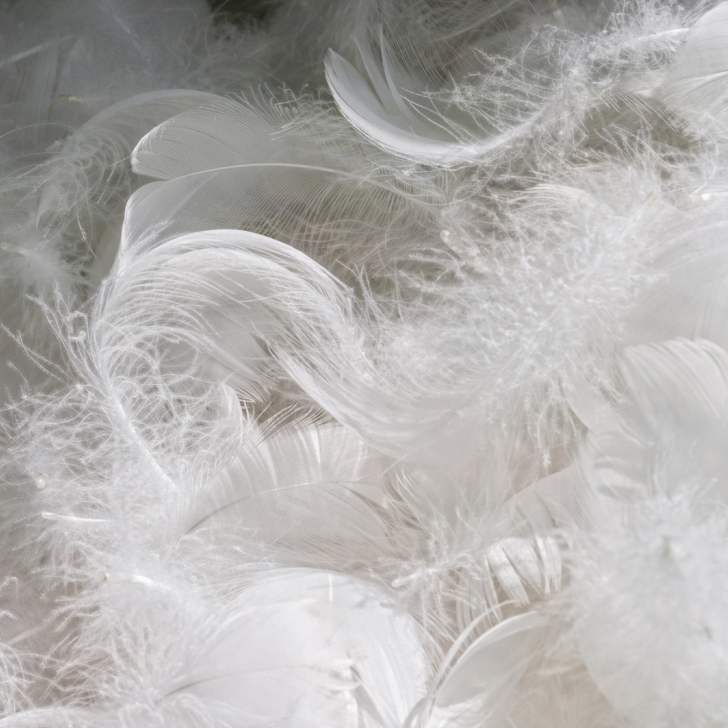How to wash a duvet correctly?


Washing the duvet is important to maintain hygiene and sleep comfort. Regularly changing bed linen is not enough. It is recommended to wash the duvet at least once a quarter, and more often in the case of allergy sufferers, children, elderly or sick people.
Washing the duvet is important to maintain hygiene and sleep comfort. Regularly changing bed linen is not enough.
It is recommended to wash the duvet at least once a quarter, and more often in the case of allergy sufferers, children, elderly or sick people. Washing the duvet depends on the type of filling and fabric. Let's not forget about regular airing of duvets and pillows, and as soon as we have the opportunity to expose them to frost and, thanks to such freezing, we will get rid of microorganisms.
Here are some general tips:
1. Check the label with washing and drying instructions for the duvet. Some duvets may require hand or dry cleaning.
2. Select the appropriate washing program in the washing machine, adapted to the temperature and speed. The program for synthetic or delicate fabrics is usually best.
3.Do not overload the washing machine drum. The quilt should have enough space and water to rinse thoroughly.
4. After washing, dry the duvet thoroughly, preferably in the sun or in a tumble dryer. Avoid drying on a radiator or near heat sources, which may cause the filling to shrink.
5.Before reusing the quilt, make sure it is completely dry and free of moisture.
How to wash anti-allergic duvets with synthetic filling?
Synthetic duvets with silicone filling are very common and the easiest to maintain. They can be washed in water washing machines, and the only limitation is the size and thickness of the duvet in relation to the load capacity of our washing machine. The basic rule is to pay attention to the manufacturer's guidelines. Therefore, it is worth paying attention to basic things such as:
-information about the maximum washing temperature of the duvet. If we wash the duvet to freshen it, do not use a lower washing temperature than recommended by the manufacturer - this will allow us to keep the duvet in good shape for a longer period.
- when it comes to detergents, duvets should be washed in delicate preparations, preferably gels and liquids, which will make it easier to rinse them from our duvet.
The situation is completely different in the case of duvets for allergy sufferers who are allergic to dust mites. Due to the specificity of these parasites, in order to completely get rid of them from the duvet, we wash it at a high temperature of at least 60 degrees Celsius. However, it is important not to exceed the manufacturer's recommended washing temperature. Manufacturers of duvets for allergy sufferers also take into account the special requirements of users and produce duvets that can be washed at temperatures higher than 60 degrees.
How to wash down and feather duvets?
Down and feather duvets are among the most excellent in terms of their properties, but at the same time delicate and quite expensive. However, natural filling in the form of down or feathers is very sensitive to chemicals and temperature. It cannot be subjected to intensive spinning, and it is not advisable to dry it at high temperatures in a tumble dryer or hang it in direct sunlight.

To wash a down duvet, several conditions must be met.
1.Check whether the volume of the duvet allows it to be placed in the washing machine drum. If your washing machine turns out to be too small, it is worth visiting us in Krakow at ul. Stradomska 19, where you will find a spacious washing machine with a load capacity of up to 13 kg. You can even wash a large double duvet in this washing machine.
2. You need to make sure that the washing machine has the appropriate program for washing delicate fabrics. Such a program should allow washing at low temperatures (20-30 degrees Celsius) in a gentle process using a small amount of washing agents.
3. You should buy appropriate detergents for washing down. Aggressive powders and washing chemicals can destroy the structure of down feathers. Therefore, you should not use standard powder or scented fabric softeners to wash down duvets. Such specialized detergents are available directly in our Frania Cafe laundry.
4.During centrifugation, set the lowest possible speed, maximum 400-500 rpm. When spinning very fast, the centrifugal force will cause the wet feathers to stick together and be distributed unevenly in the pour. When drying such a quilt in a tumble dryer, use cold drying air with a high flow rate. To break up the stuck-together down filling, throw heavy tennis balls into the dryer - this will make your duvet dry faster and fluffier.
As you can see, it is not complicated to wash a duvet, and it is definitely worth keeping this in mind for hygiene reasons. If you have any problem, our staff will be happy to advise and help.